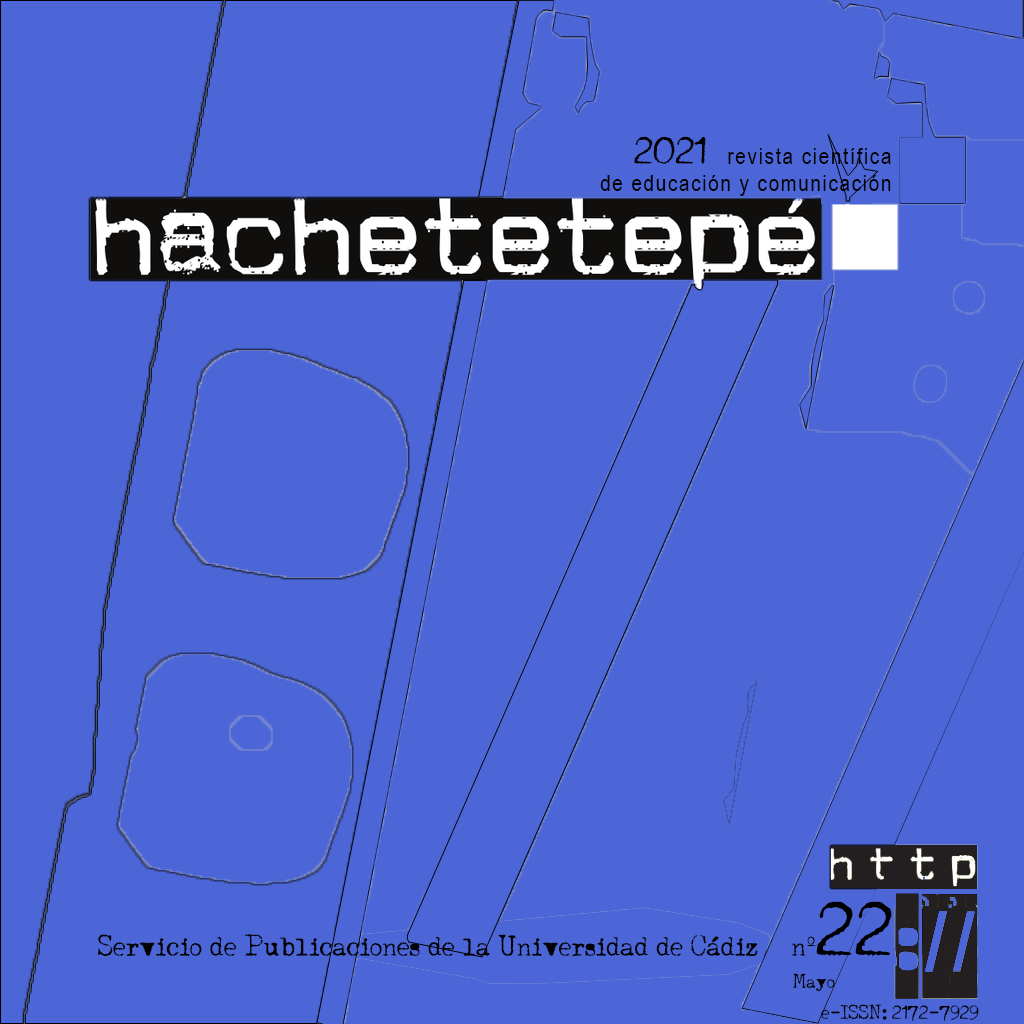Representations of female characters in the animated film Despicable Me 2

Downloads
- PDF (Português (Brasil)) 238
- EPUB (Português (Brasil)) 93
- VISOR (Português (Brasil))
- MÓVIL (Português (Brasil))
- XML (Português (Brasil)) 9
DOI
https://doi.org/10.25267/Hachetetepe.2021.i22.1202Info
Abstract
Animated cinema is increasingly consolidated as a large expanding market whose filmic continuities add new adventures and characters to the original plots. From the animated films produced in the first decade of the 21st century, we could see a predominance of male protagonist characters. Reflecting on this absence of the feminine protagonists, the objective of this article is to identify and analyse which representations of and about women came to the scene in the animated film Despicable Me 2. We used Cultural Studies, Women Studies and Gender Studies as theoretical contributions to analyze the movie – above all, the theoretical contributions by Judith Butler, Guacira Lopes Louro, Rosa Maria Bueno Fischer, Ruth Sabat e Tomaz Tadeu da Silva – and as methodological procedure, the qualitative interpretative analysis. After the box office success achieved with the first film, the sequences gained the presence of the character Lucy Wilde and with her some significant changes in the representations of women, however the hegemony of traditional images and speeches about female is still remarkable.
Keywords
Downloads
How to Cite
License
Copyright (c) 2021 Ana Paula Trofino Ohe, Nilson Dinis

This work is licensed under a Creative Commons Attribution-NonCommercial-NoDerivatives 4.0 International License.
Those authors who have published with this journal, accept the following terms:
- They will retain their copyright and guarantee the journal the right to first publication of their work, which will simultaneously be subject to the Creative Commons Attribution License . They may be copied, used, disseminated, transmitted and publicly displayed, provided that the authorship, url, and magazine are cited, and are not used for commercial purposes. No derivative works are allowed.
- They may adopt other non-exclusive license agreements for the distribution of the published version of the work (e.g., deposit it in an institutional telematic archive or publish it in a monographic volume) provided that the initial publication in this journal is indicated.
- Disseminate your work through the Internet (e.g., in institutional telematic archives or on your website) once the manuscript is accepted, which may lead to interesting exchanges and increased citations of the published work. (See The effect of open access).
Hachetetepé. Scientific journal of education and communication does not charge a fee for the submission of manuscripts or for the publication of its articles.
References
Butler, J. (2003). Problemas de gênero: feminismo e subversão da identidade. Civilização Brasileira.
Colling A. (2013). Gênero e História. Um diálogo possível? Revista Contexto & Educação, 19(71-72), 29-43. https://doi.org/10.21527/2179-1309.2004.71-72.29-43
Duarte, R. (2006). Cinema & educação. Autêntica
Fischer, R. M. B. (1996). Adolescência em discurso: mídia e produção de subjetividade. [No publicada Tese de doutorado] Universidade Federal do Rio Grande do Sul.
Frow, J. y Morris, M. (2006). Estudos Culturais. En N. K. Denzin y Y. S. Lincoln (eds.). O planejamento da pesquisa qualitativa: teorías e abordagens. (pp. 315-343). Artmed.
Giroux, H. (1995). A disneyzação da cultura infantil. En T. T. Silva y A. F. Moreira (orgs.) Territórios contestados: o currículo e os novos mapas políticos e culturais. (pp. 49-81). Vozes.
Hall, S. (2016). Cultura e representação. Apicuri.
Louro, G. L. (2000). Currículo, gênero e sexualidade. Porto.
Louro, G.L.(1997). Gênero, sexualidade e educação: uma perspectiva pós-estruturalista. Vozes.
Narvaz, M. G. y Koller, S. H. (2006). Metodologias feministas e estudo de gênero: articulando pesquisa, clínica e política. Psicologia em Estudo. 11(3), 647-654. https://doi.org/10.1590/S1413-73722006000300021
Ohe, A.P.T. (2020). Representações sobre o feminino em sequências fílmicas de animação. [Não publicado Tese de Doutorado]. Universidade Federal de São Carlos, São Carlos.
Pinsky, C. B. (2014). Mulheres dos anos dourados. Contexto.
Sabat. R. (2003). Filmes infantis e a produção performativa da heterossexualidade. [Não publicado Tese de Doutorado] Universidade Federal do Rio Grande do Sul.
Silva, P. F. C. (2012). Olhe bem de perto: a construção dos discursos sobre família nos filmes hollywoodianos contemporâneos. [Dissertação de Mestrado, Pontífica Universidade Católica de Minas Gerais]
Silva, T. T. (2010). Documentos de identidade: uma introdução às teorias do currículo. Editora Autêntica.
Silva, T. T. (ed.). (2007) . Identidade e diferença: a perspectiva dos estudos culturais. Vozes.
Swain, T. N. (2011). Feminismo e representações sociais: a invenção das mulheres nas revistas “femininas”. História: Questões & Debates, 34, 11-44. http://dx.doi.org/10.5380/his.v34i0.2657
Tedeschi, L. A. (2012). As mulheres e a história: uma introdução teórico metodológica. Dourados. UFGD.
Woodward, K. (2007). Identidade e diferença: uma introdução teórica e conceitual.
En T. T. Silva (coord.) Documentos de identidade: uma introdução às teorias do currículo (pp. 7-72). Vozes
Wolf, N. (1992). O mito da beleza. Rocco.
Wortmann, M.L.C. (2001). O uso do termo representação na Educação em Ciências e nos Estudos Culturais. Pro-posições, 12(1), 151-161. https://periodicos.sbu.unicamp.br/ojs/index.php/proposic/article/view/8644018
FILMOGRAFIA
Renaud, C. y Coffin, P. (Directores). (2013). Meu Malvado Favorito 2 [Película]. Universal Pictures e Illumination Entertainment






